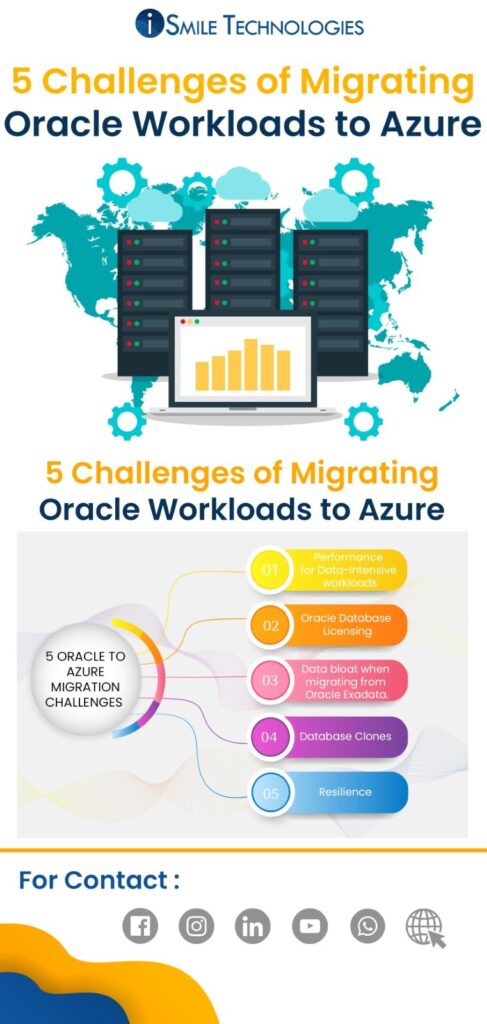Are you thinking about migrating your Oracle database to SQL Server? Oracle Database is a great platform, but it comes with high licensing costs. Companies are finding this out the hard way when it comes time to upgrade or modernize their data implementation. Many organizations deploy Oracle in their IT technology stack and still use the on-premises database version. However, with exponential data growth, their data environments are struggling to handle the growing load – requiring more compute power and more storage, which drives up data costs. Migrating Oracle Data to the cloud is a highly viable option for optimizing cost and performance, and migrating Oracle Database to SQL Server (Azure cloud or on-premises) is a popular alternative.
5 Oracle to Azure Migration Challenges
The Oracle database is used for mission-critical applications worldwide, and migrating Oracle workloads to the public cloud requires extensive planning and testing. This blog looks at the five challenges of migrating Oracle database workloads to Microsoft Azure and how you can solve them.

Challenge #1: Performance for Data-Intensive workloads.
Mission-critical applications on Oracle are data-intensive, and performance is paramount. Because the public cloud is a shared, virtualized environment, data performance can be unpredictable as cloud providers set caps on speed and data volume. There’s a risk that you’ll overpay for cloud resources to match performance. For mission-critical workloads, high throughput and low latency are required in the cloud to meet user and SLA requirements.
Challenge #2: Oracle Database Licensing
Oracle’s database licensing model is complex and requires customers to be careful to avoid unexpected costs. An organization will likely need additional database licenses when migrating to the public cloud because Oracle Processor Core Factor Table does not apply to Authorized Cloud Environments. The number of database licenses required may increase significantly compared to on-premise operations.
Cloud providers impose throttles on capacity and performance, resulting in the need for more (and stronger) VMs and, therefore, more licenses.
Challenge #3: Data bloat when migrating from Oracle Exadata.
If you are using Oracle Exadata and Hybrid Columnar Compression (HCC) for data compression, there are a few issues to consider when migrating to the public cloud:
- Customers migrating from Exadata to Azure should expect “data inflation” as the database grows to its non-HCC compressed size.
- HCC and Exadata are only supported on Oracle Cloud. So, customers migrating to Azure will have to forgo HCC, resulting in a more extensive database footprint and a higher cloud bill.
An alternative is to use Oracle’s Advanced Compression Option instead, which incurs further database licensing costs. The additional power of the CPU database server required to perform these compression operations results in customers deploying larger VMs with more vCPUs, which requires more database licenses.
Challenge #4: Database Clones
Database clones are used for development, testing, analytics, and production. Oracle customers using Exadata Snap Clones may be surprised to learn that creating writable clones in the public cloud requires creating full clones that take-up capacity and are time-consuming to manage.
Challenge #5: Resilience
Data must be secure and resilient. Many Oracle customers use Real Application Clusters (RAC) to run highly available applications on multiple nodes. Oracle RAC is only supported in the Oracle Cloud, and migrating to Azure requires other methods to ensure resiliency.
What iSmile technology offers you?
Being one of the top companies with cloud migration services, we assure all our clients will have smooth data transfer with proper security. We offer best-in-class pre and post services support so that you can satisfy all the needs of our clients. So, in case you are looking for a partner for your Oracle to Cloud migration, then don’t forget to visit iSmile Technologies.









